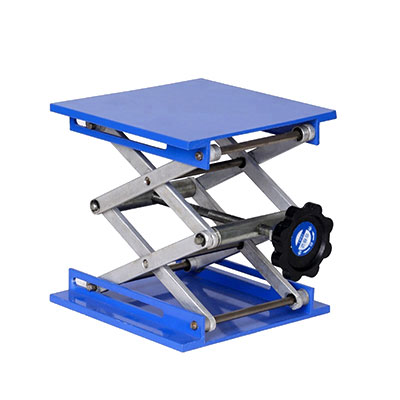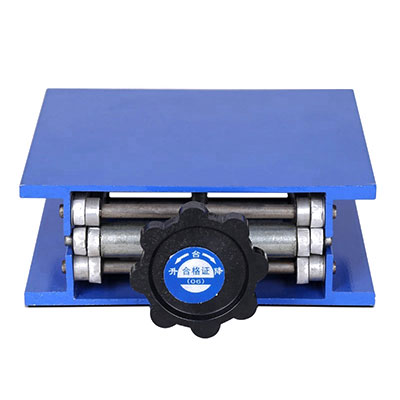-
WhatsApp
-
Email
Laboratory vacuum mixer homogenizer, also known as a laboratory emulsifier or laboratory homogenizer, is a specialized piece of equipment used in laboratory settings to mix and emulsify liquids. It is specifically designed for small-scale production, research, and development purposes.

Features of laboratory vacuum mixer homogenizer
Variable Speed Control: Laboratory vacuum mixer homogenizer offer adjustable speed settings, allowing users to control the intensity of mixing and emulsification. This feature is useful for optimizing the process based on the viscosity of the materials and the desired particle size distribution.
Temperature Control: Our lab emulsifying mixer machines have temperature control capabilities. This feature enables users to heat or cool the mixture during the emulsification process, which can be beneficial for certain formulations or to maintain stability.
Programmable Functions: Offer programmable functions, allowing users to save and repeat specific mixing parameters for consistent results across different batches. Programmable functions can also automate certain processes, making them more efficient and reducing the need for manual intervention.
Timer Function: Lab emulsifying mixer machines often include a timer function, which allows users to set a specific mixing duration. The timer can be helpful for precise control and reproducibility, ensuring that the materials are mixed for the desired period.
Vacuum Capabilities: Laboratory vacuum mixer homogenizer have a vacuum feature, allowing for degassing or deaeration of the mixture. Vacuum capabilities can help remove air bubbles from the emulsion, resulting in a smoother and more uniform final product.
Safety Features: Lab emulsifying mixer machines incorporate various safety features, such as overheat protection, motor overload protection, and emergency stop buttons. These features ensure safe operation and protect the equipment from potential damage.
Interchangeable Mixing Heads: Depending on the model, lab emulsifying mixer machines may offer interchangeable mixing heads or rotor-stator assemblies. Different types of mixing heads can be used to accommodate specific applications, such as high shear mixing, homogenization, or dispersion.
Easy Cleaning and Maintenance: Our lab emulsifying mixer machines are designed for easy cleaning and maintenance. Removable parts and accessible surfaces facilitate thorough cleaning between experiments and minimize the risk of cross-contamination.
Compact Size: Lab emulsifying mixer machines are compact in size, making them suitable for laboratory benchtops or limited workspace environments. Their small footprint allows for easy integration into existing setups.

Application of laboratory vacuum mixer homogenizer
Pharmaceutical Industry: Laboratory vacuum mixer homogenizer are used in pharmaceutical research and development to formulate creams, ointments, gels, and other topical medications. They are also employed in the production of oral suspensions, emulsions, and lipid-based drug delivery systems.
Cosmetics and Personal Care Industry: Emulsifying mixer machines are utilized in the cosmetics and personal care industry for the production of creams, lotions, serums, and emulsions. Help achieve stable emulsions with desired texture, consistency, and appearance.
Food and Beverage Industry: Laboratory vacuum mixer homogenizer find applications in food and beverage research and development. They are used for emulsifying ingredients in products like dressings, sauces, mayonnaise, and dairy-based beverages.
Chemical Industry: Our machines are utilized in chemical laboratories for mixing and emulsifying various chemical formulations, such as paints, inks, adhesives, and coatings.
Research and Development: Laboratory vacuum mixer homogenizer play a crucial role in research and development activities across industries. They enable scientists and researchers to test and optimize new formulations, study the effects of different variables on emulsion stability and quality, and explore new emulsification techniques.
Quality Control: Emulsifying mixer machines are employed in quality control laboratories to ensure the consistency and uniformity of emulsion-based products. They enable manufacturers to verify batch-to-batch consistency, evaluate the stability of emulsions, and assess the performance of new formulations.
Nanotechnology: In nanotechnology research, lab emulsifying mixer machines are used to produce nanoparticle suspensions or emulsions. Help achieve precise control over particle size and distribution, which is essential for various nanomaterial applications.
Academic and Educational Institutions: Laboratory vacuum mixer homogenizer are utilized in academic and educational institutions for laboratory experiments, teaching purposes, and hands-on training in emulsion science and technology.
| Model | LET-1L | LET-2L | LET-5L | LET-10L |
| Power supply | 220V,50/60Hz | 220V,50/60Hz | 220V,50/60Hz | 220V,50/60Hz |
| Minimum allowable mixing volume | 300ml | 500ml | 1000ml | 2500ml |
| Minimum allowable amount of emulsification | 500ml | 1000ml | 2500ml | 5000ml |
| The maximum allowable amount of emulsification | 1000ml | 2000ml | 5000ml | 10000ml |
| Working temperature | 170℃ | 170℃ | 290℃ | 290℃ |
| Can reach vacuum (Mpa) | -0.097~0.02 | -0.097~0.02 | -0.097~0.02 | -0.097~0.02 |
| Maximum processing viscosity (CP) | 100,000 | 100,000 | 200,000 | 300,000 |
| Stirring motor power | 90W | 120W | 150W | 180W |
| Stirring speed range (rpm) | 0~230 | 0~230 | 0~230 | 0~230 |
| Stirring paddle configuration | Anchor screw with scraping wall impeller | |||
| Scraper material | Silicone Rubber | |||
| Homogeneous motor power | 500W | 500W | 800W | 1050W |
| Homogeneous speed range (rpm) | 10000~28000 | 10000~30000 | 10000~30000 | 10000~30000 |
| Homogeneous working head configuration | 20DG | 25DG | 25DG | 30DG |
| Reactor lid opening | Homogenizer port + hopper port + temperature measuring port + vacuum port + 3 spare ports | |||
| Lifting bracket travel | 210 | 210 | 270 | 270 |
| The main contact material with the material | SS316L, borosilicate glass, FKM10 | |||
| Vacuum port outer diameter | 10 | 10 | 10 | 10 |
| Inlet and outlet outer diameter of glass kettle jacket | 12 | 12 | 16 | 16 |
| Allowable ambient temperature | 5~40℃ | 5~40℃ | 5~40℃ | 5~40℃ |
| Allowable relative humidity | 80% | 80% | 80% | 80% |
| Dimensions (mm) | 400*390*780 | 400*390*780 | 480*420*850 | 480*420*850 |
| Standard weight (Kg) | 37 | 38 | 45 | 60 |





















